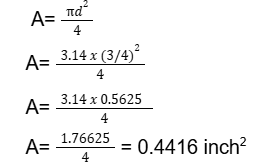Q1: Define reinforcement.
Ans:The steel bars provided in concrete structures are known as reinforcement.
Q2: Write the types of reinforcement.
Ans:
The types are as follows:- ➔ According to Shape:
- ➔ Round
- ➔ Square
- ➔ Rectangle
- ➔ Hexagon
- ➔ Octagon
- ➔ According to Surface:
- ➔ Plain Bars
- ➔ Deformed Bars
- ➔ According to Strength:
- ➔ Grade 40
- ➔ Grade 60
- ➔ Grade 75
- ➔ Grade 90
- ➔ According to Material:
- ➔ Mild Steel
- ➔ Medium Carbon Steel
- ➔ High Carbon Steel
- ➔ According to Use:
- ➔ Tensile Steel
- ➔ Compression Steel
- ➔ Shear Steel
- ➔ According to Stress:
- ➔ Ordinary Reinforcement
- ➔ Pre-stressed Reinforcement
Q3: Define plain bars.
Ans:Plain bars are also known as round bars. They have smooth surfaces and are generally not preferred for reinforced concrete structures due to their weaker bond with concrete.
Q4: Define deformed bars.
Ans:Deformed bars have ribs or indentations on their surface, which improve their bond strength with concrete, making them more effective in resisting tension and shear forces.
Q5: Define the purpose of providing reinforcement.
Ans:The purpose of reinforcement is to improve the tensile strength of the structure.
Q6: Write the purpose of ribs in bars.
Ans:The ribs are provided in bars to provide friction and better grip.
Q7: Write the measuring unit and paying unit of reinforcement.
Ans:The measuring unit of reinforcement is “quintals” while the unit of payment is “per cwt”.
Q8: Define lateral ties.
Ans:These are separate small diameter bars/steel binders bent around the longitudinal bars of a square or rectangular column. The main purpose of lateral ties is to keep the longitudinal bars in place.
Q9: Define helical ties.
Ans:These are separate small diameter bars/steel binders bent around the longitudinal bars of a circular column in the form of a helix. It is termed as spiral or helical reinforcement or helical ties.
Q10: Define longitudinal bars.
Ans:The bars running along the length of the column are allied longitudinal bars.
Q11: Define pitch of lateral ties.
Ans:The distance between the centers of the two successive lateral ties is called pitch.
Q12: Define concrete cover.
Ans:Concrete cover, in RCC, is the minimum distance between the outer surface of the concrete and the nearest reinforcing steel (rebar).
Q13: Write 4 advantages of RCC.
Ans:
The advantages are as follows:- ➔ R.C.C structure is durable, economical, water resistant and fire resistant.
- ➔ It can be molded to any shape & size.
- ➔ It gives a good aesthetic appearance to structure and size.
- ➔ Being rigid material, it can bear shocks of earthquake.
- ➔ Construction of all engineering structures is possible is easy with R.C.C.
Q14: Write some disadvantages of using RCC.
Ans:
The disadvantages are as follows:- ➔ The initial cost of R.C.C is high.
- ➔ The dead load of the structure is increased.
- ➔ Construction requires a large quantity of timber and steel plates for form work.
Q15: What is Grade of steel?
Ans:The strength of steel is known as the Grade of steel. A steel of grade 40 has strength of 40,000 psi.
Q16: What is the commonly used steel grade?
Ans:Commonly used steel grades are 40 and 60.
Q17: Define BBS.
Ans:BBS is known as Bar Bending Schedule. It is a schedule that contains all the information of reinforcement (length, grade, amount etc.) used in the construction project.
Q18: Why is the bar bending schedule prepared?
Ans:A Bar Bending Schedule is prepared to get the idea of the specifications and cost of the reinforcement used in the project.
Q19: Define crank bar.
Ans:A Crank bar is a type of main bar that is bent at an angle of 45°.
Q20: Define Main bars.
Ans:
Main bars are provided in the shorter span of the slab.- ➔ Main bars have larger diameter than distribution bars.
- ➔ Main bars help to transfer load of slab to beam or column.
- ➔ Main bars are usually Crank bars.
Q21: Define Distribution bars.
Ans:
Distribution bars are provided in the longer span of the slab.- ➔ Distribution bars have smaller diameter than main bars.
- ➔ Distribution bars help to distribute load across the slab.
- ➔ Distribution bars are also called Temperature bars.
Q22: Write the diameter of #4 bar.
Ans:The diameter of # 4 bar is 4/8”.
Q23: Calculate area of ¾” diameter bar.
Ans:

Q24: Write the formula to calculate Number of Bars in an RCC Slab.
Ans:

Q25: Write the formula to calculate length of straight bar in a Slab
Ans:



